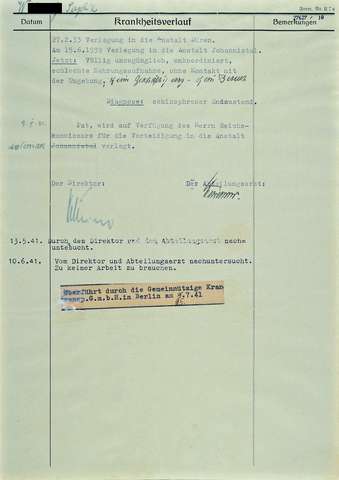Exclusion of adults
Residents of institutions for disabled and psychiatric patients had always worked in the institutions' own workshops and in agriculture. The National Socialist regime deliberately made use of patients' labour to reduce costs at the hospital. Patients who were unable to work or did not want to work were seen as »useless eaters«. Institution directors independently developed proposals to reduce costs – particularly with regard to the food supply – at the expense of their disabled and chronically ill patients.
As part of »Aktion T4«, the evaluation of work performance became a decisive selection criterion. Patients who were able to work productively and independently had the highest survival rates. Institutional residents who, like Sophie W. »could do no work« or could only carry out simple activities such as horse-hair plucking, weaving mats or gluing bags were particularly at risk of being selected for killing.
In addition, the adaptation of the patients to the hospital regime and a potential increase in care costs also played a role in the selection procedure of »Aktion T4«. Bedridden patients and those regarded as disturbing, restless or even dangerous had significantly lower survival rates. By contrast, the heritability of the disease was of no significance in practice for the selection decision.
The majority of the »Aktion T4« victims were female and had for the most part been put into an institution because they had been diagnosed with schizophrenia. What was above all decisive for their selection was their reduced capacity for work in the institution – compared to male patients.

© Bundesarchiv Berlin, R 179/27627